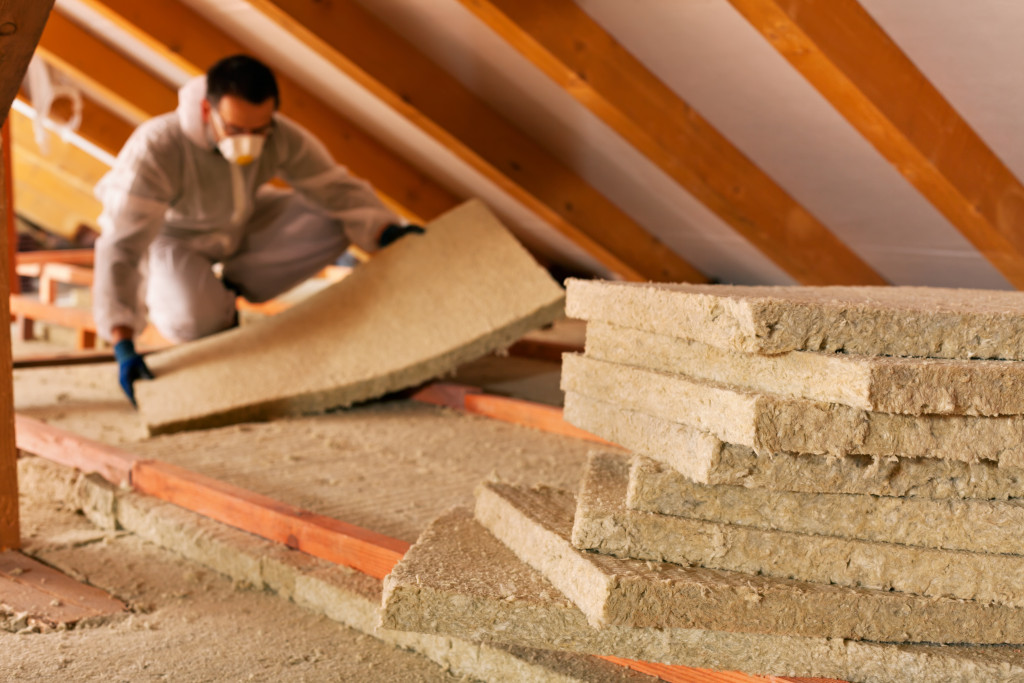Your new home is your pride and joy, and you want to do everything in your power to protect it from the elements. Unfortunately, Mother Nature can be unpredictable, and sometimes even the best-laid plans go awry. The structure of your home is built to withstand extreme weather conditions, but that doesn’t mean it’s immune to damage.
Here are some tips to help you weatherproof your home and keep it in good condition for years to come.
1. Inspect your roof regularly.
Your roof is your home’s first line of defense against the elements, so keeping it in good condition is essential. Inspect your roof at least twice a year for signs of damage, and make any necessary repairs as soon as possible.
When inspecting your roof, look for cracked or missing shingles, loose nails, and other potential problem areas. You should also check the gutters and downspouts to ensure they’re debris-free. Some homeowners forget to look at the interior of their homes, but it’s also essential to do this. Check for water stains on the ceilings or walls, which could indicate a leak.
You can inspect your roof yourself, but it’s also a good idea to hire a professional to do it for you. They’ll be able to spot problems you might miss and provide you with a written report of their findings.
2. Seal any cracks or gaps.
Even the most minor crack or gap can let water and air into your home, so it’s essential to seal them up. Use caulk or weatherstripping to seal any cracks or crevices around doors and windows, and check for any other areas where air might be able to get in.
Common places to check include electrical outlets, dryer vents, and plumbing fixtures. It’s also a good idea to regularly check the weatherstripping around your doors and windows to ensure that it’s still in good condition. If you find any areas that need to be repaired, don’t hesitate to do so.

3. Insulate your home.
One of the best ways to protect your home from weather damage is to ensure it’s adequately insulated. Insulation helps keep your home cool in the summer and warm in the winter and can also reduce noise levels.
If you live in an area that experiences extreme temperatures, you might consider installing insulation in a crawl space under your home. This will help keep the temperature of your home consistent and can also prevent moisture buildup. Most homes are insulated in the attic, but it’s also a good idea to check the insulation in your crawl space.
4. Install storm shutters.
Many homeowners don’t think about installing storm shutters until a hurricane or tornado arrives, but it’s best to do it before the storm hits. Storm shutters can protect your windows from high winds and flying debris and help keep your home cool during a power outage.
If you live in an area prone to severe weather, it’s a good idea to have storm shutters installed on all of your home’s windows. You can buy them ready-made, or you can have them custom-built to fit your windows. If you decide to install storm shutters, be sure to do so before the next severe weather event.
5. Trim trees and plants.
Trees and plants can add beauty to your home, but they can also cause damage if they’re not properly maintained. Overhanging branches can fall and break windows, and weak trees can fall and damage your roof. It’s important to trim any trees or plants close to your home and remove any dead or dying trees.
A good time to trim trees is in the late fall or early winter when they’re dormant. This will help prevent damage to your home when the branches are heaviest. If you have any concerns about a tree on your property, it’s best to consult with a professional arborist. They can assess the tree and recommend the best course of action.
6. Clear your gutters.
Gutters play an essential role in protecting your home from weather damage. They help to redirect water away from your home, which can prevent leaks and water damage. It’s essential to clean your gutters regularly, especially if you live in an area with a lot of trees.
Leaves and other debris can clog your gutters and cause them to overflow. This can lead to water damage on your roof and in your home. To prevent this, clean your gutters at least once a year. If you live in an area with many trees, you might need to do it more often.
Weather damage can be a severe problem, but you can take steps to protect your home. Following these tips can help keep your home in good condition and prevent costly repairs. Always check your home for any signs of damage after a severe weather event, and don’t hesitate to make repairs as soon as possible.

